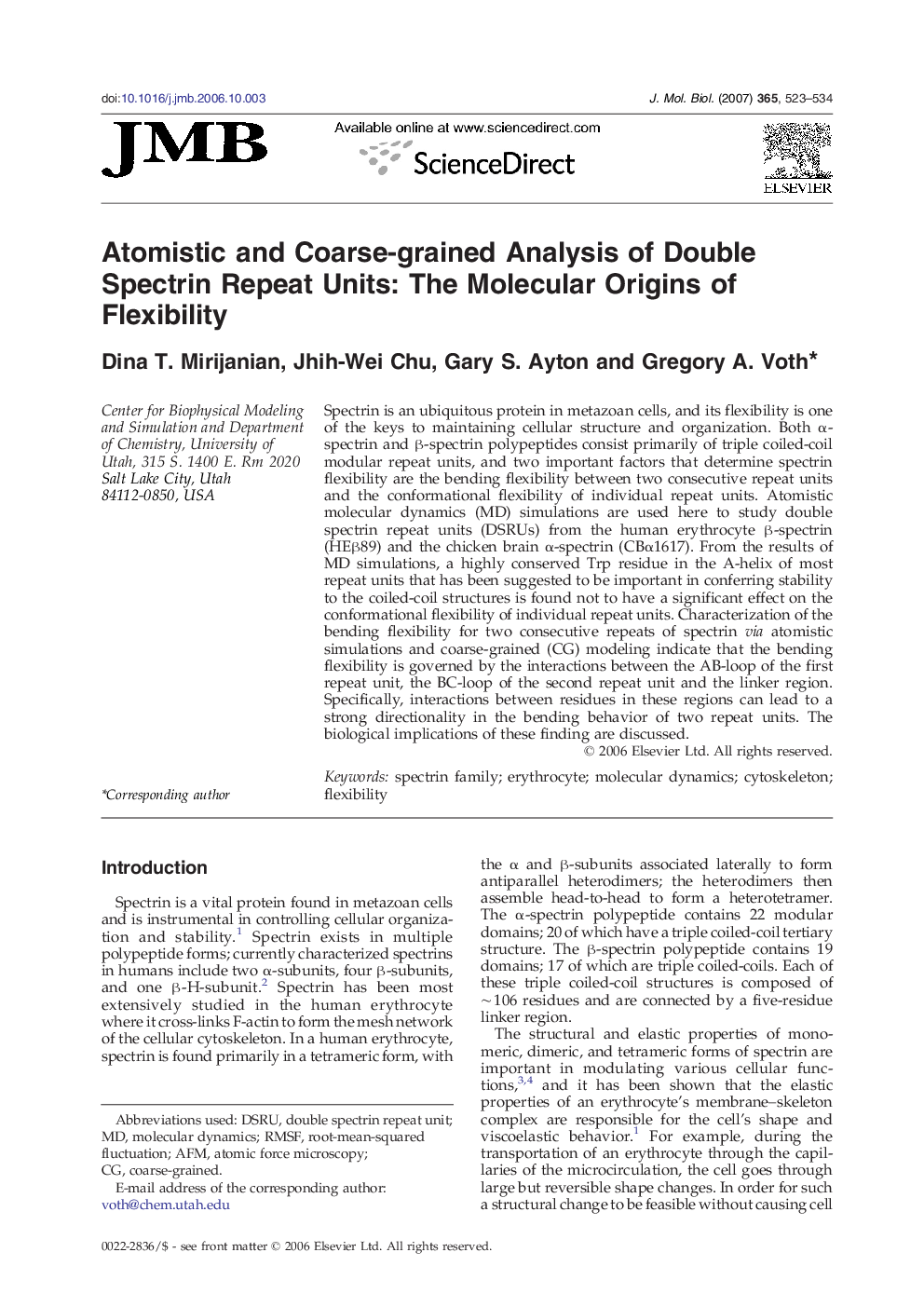| Article ID | Journal | Published Year | Pages | File Type |
|---|---|---|---|---|
| 2188570 | Journal of Molecular Biology | 2007 | 12 Pages |
Spectrin is an ubiquitous protein in metazoan cells, and its flexibility is one of the keys to maintaining cellular structure and organization. Both α-spectrin and β-spectrin polypeptides consist primarily of triple coiled-coil modular repeat units, and two important factors that determine spectrin flexibility are the bending flexibility between two consecutive repeat units and the conformational flexibility of individual repeat units. Atomistic molecular dynamics (MD) simulations are used here to study double spectrin repeat units (DSRUs) from the human erythrocyte β-spectrin (HEβ89) and the chicken brain α-spectrin (CBα1617). From the results of MD simulations, a highly conserved Trp residue in the A-helix of most repeat units that has been suggested to be important in conferring stability to the coiled-coil structures is found not to have a significant effect on the conformational flexibility of individual repeat units. Characterization of the bending flexibility for two consecutive repeats of spectrin via atomistic simulations and coarse-grained (CG) modeling indicate that the bending flexibility is governed by the interactions between the AB-loop of the first repeat unit, the BC-loop of the second repeat unit and the linker region. Specifically, interactions between residues in these regions can lead to a strong directionality in the bending behavior of two repeat units. The biological implications of these finding are discussed.
